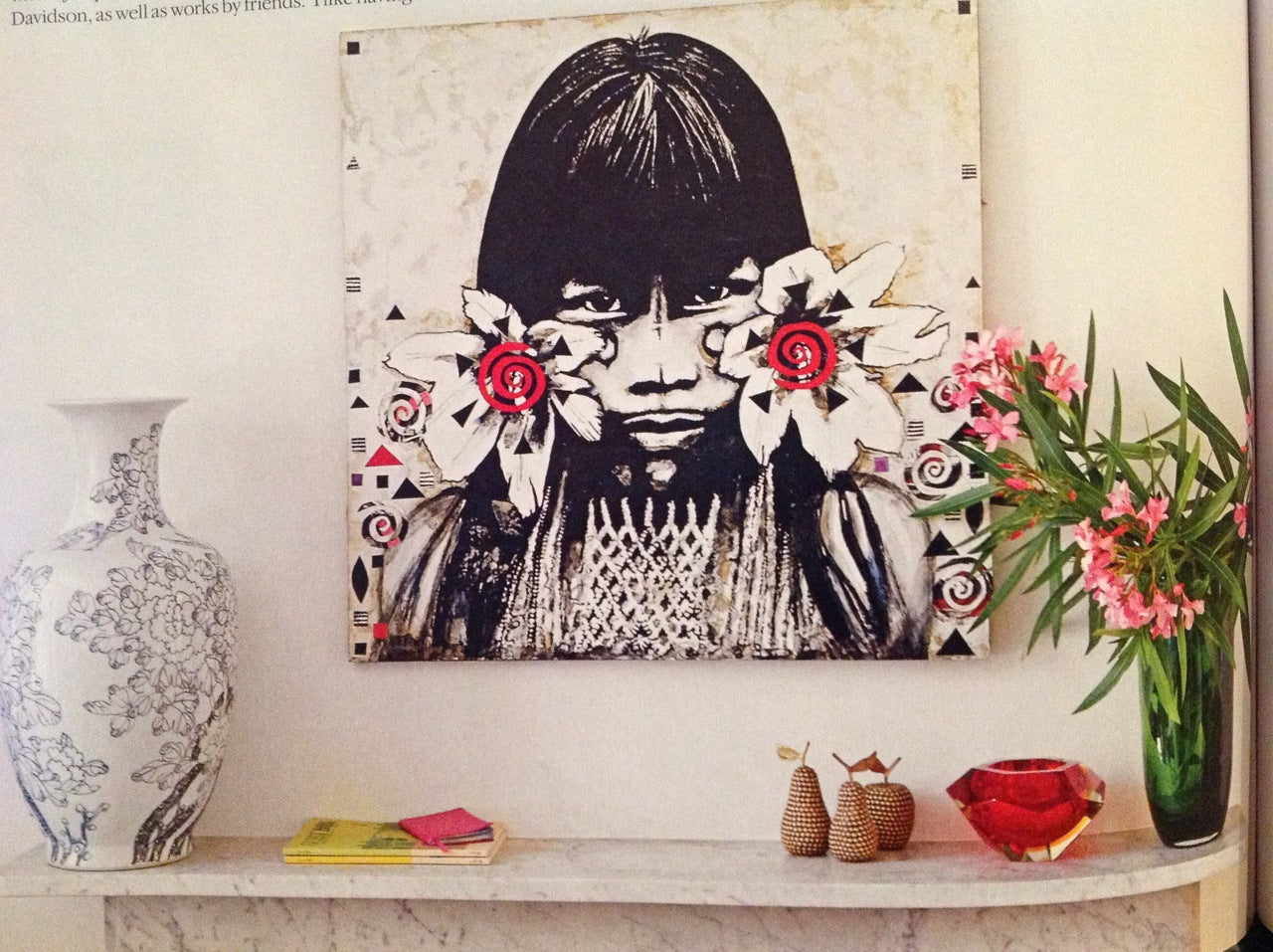Last year, Christie’s South Kensington sold a pair of 1970s bronze pineapple lamps for £2,750 – against a lower estimate of £2,000. The estimate was based on the fact that the lamps are by French design house Maison Charles – one of the style’s two big names – but lack their original bronze shades. The hammer price, realised in spite of the modern fabric shade replacements, is an indication of how desirable such lamps are. “They are artistic statements of the period,” says Jeremy Morrison, Christie’s European head of design, “bought by people looking to make a statement in their homes. It is the same today: people buy for the aesthetic rather than the investment.”
From left: 1970s Maison Charles pineapple lamp, pair sold for £2,750 at Christie’s. 1960s Maison Charles fern lamp, £2,850 at Ed Butcher | Image: Christie’s Images Limited 2016
One such collector is Katrien Vermeeren, director of specialist rug store Emily’s House. “For me, it’s all about them being so beautiful,” she says. “I bought an unnamed pair with pineapple bases and lots of leaves for about £2,500 from Brownrigg in Gloucestershire. They have a lovely, warm bronze tone and go very well with all my midcentury furniture.”
We should all buy what we love, but for anyone with an eye for investment potential, provenance does, of course, matter. And in the case of midcentury, naturalistic table lamps that means buying something that bears the stamp of Maison Charles or can be reliably attributed to its rival, Maison Jansen. Established in Paris by Dutch-born Jean-Henri Jansen in 1880, Maison Jansen is considered to be the world’s first global design brand. In the late 1950s and 60s its distinctive modernism-meets-art deco-meets-Vienna secession style chimed with those seeking an alternative to the pared-back lines of most midcentury design – among them Gunter Sachs and Jackie Kennedy, who commissioned elaborate Jansen lamps for the White House.
Maison Jansen’s global reach means its name is better known than that of Maison Charles, particularly in the US, but its palm tree and pineapple lamps are harder to authenticate. “This was an interior design company, not a manufacturer,” says dealer Ed Butcher, who sells Charles and Jansen lamps, “so it commissioned small ateliers to make its pieces. Some of these did sign their names occasionally – for example, I recently sold a palm tree lamp signed Atelier Techoueyres – but none of them are signed ‘Maison Jansen’.” (The way to tell a genuine Jansen from one of the many contemporaneous copies, Butcher and others say, is by the thickness of the brass and the quality of the patina – copies tended to be of lighter metal.) The Techoueyres lamp (price on request) was snapped up by Alex Hardee, partner and music agent at London’s Coda Agency. He has bought several Jansen lamps, drawn to their “classic yet quirky style and sculptural presence”, and was attracted to this one by the rarity of that signature.
Jansen’s great rival, Maison Charles, was founded in Paris in 1908 by Ernest Charles, and is best known for lamps such as Epi de Maïs, Artichaut and Ananas, designed in the early 1960s by Charles’s son Emile-Albert, grandsons Jacques and Jean, and Jean’s wife Chrystiane. Pairs of these vegetal lamps are particularly popular and, in good condition, fetch high prices: 1stdibs, for example, currently has a pair of Epi de Maïs table lamps in patinated bronze for £5,900.
1960s Maison Jansen palm tree lamp by Atelier Techoueyres, price on request at Ed Butcher
The Jansen and Charles styles are similar, but misattribution is unlikely, since the latter signed almost everything. “Most are stamped ‘Charles, made in France’ or ‘Charles Frères’,” says Peter Woodward of 3details. “Maison Charles excelled at bronze casting, and lamps were made to commission or in editions of 100. The attention to detail was extraordinary; if you take one apart, it’s like a piece of engineering.”
Emma Burns, design director of Sibyl Colefax & John Fowler, fell in love with Maison Charles’s lamps a while back. “They are so fine and the casting is so good,” she says. “There is lots of lovely light and shade on the metalwork.” Her favourite, bought in London for around £1,000 five years ago, is composed of two large, flat leaves on a black marble plinth, and finished with an original brass shade.
Prices, meanwhile, are rising in the UK and the US: Butcher, for example, has a Maison Charles fern leaf lamp similar to Burns’s for £2,850, while Chicago-based antiques store Old Plank has a c1968 bronze Maison Jansen water lily lamp for $5,800. Anthony Barzilay Freund, director of fine art at 1stdibs, puts this increase down to current interiors trends: “Collectors are always looking for the next gem. These lamps are that gem – they are midcentury, which has been hot for 20 years, but also classicist, tying in with the shift towards more playful, decorative interiors.”
It is interesting to note that an auction catalogue commemorating Maison Charles’s 100th anniversary sold on 1stdibs for £152, which the site’s vetting and appraisals specialist, Victoria Shaw-Williamson, sees as a sign of rising academic interest. And that could prove good news for the long-term health of the palm-and-pineapple market.




